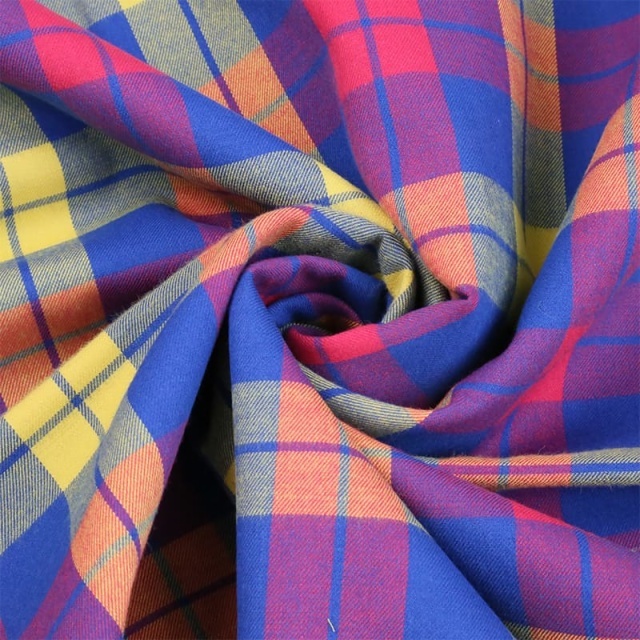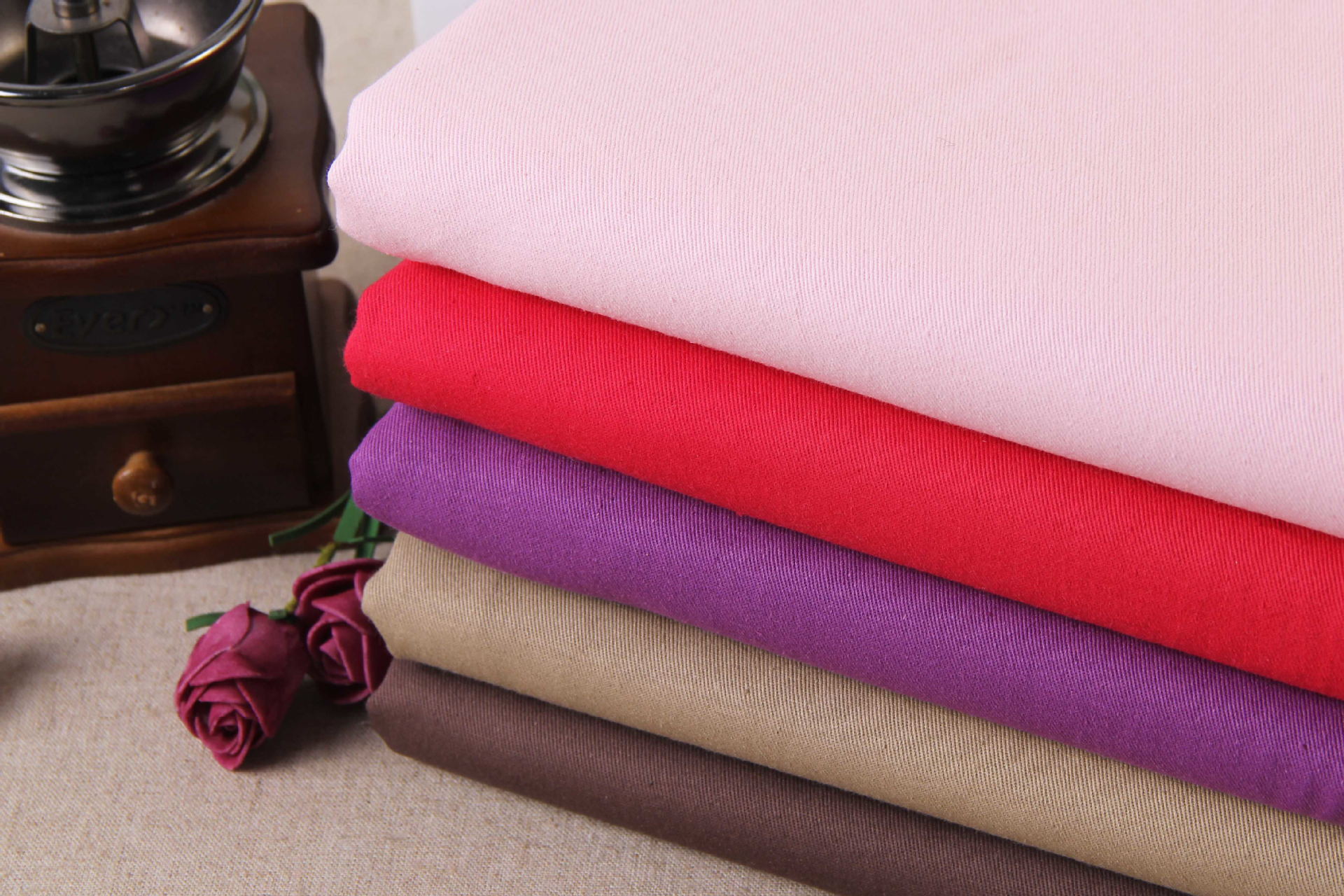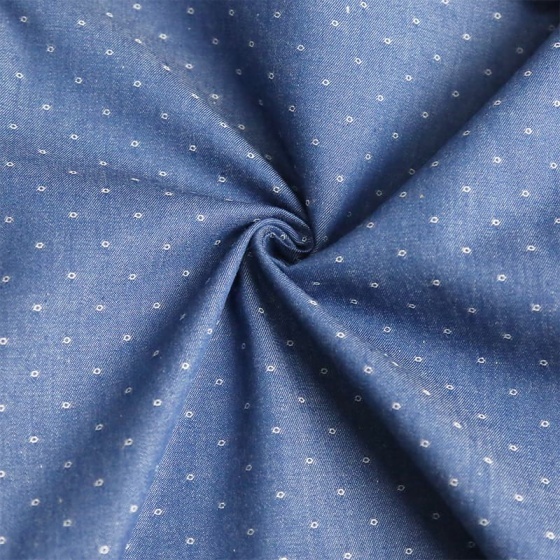The Comprehensive Guide to Crafting High-Quality Cotton Dyed Fabric
Aug 02,2025
The Comprehensive Guide to Crafting High-Quality Cotton Dyed Fabric
Table of Contents
- 1. Introduction to Cotton Dyed Fabric
- 2. The Significance of High-Quality Cotton
- 3. Steps in the Cotton Dyeing Process
- 3.1 Cotton Fiber Selection
- 3.2 Preparation of Cotton Fabric
- 3.3 Dyeing Techniques
- 3.4 Post-Dyeing Process
- 4. Quality Control in Dyed Cotton Fabric
- 5. Sustainable Practices in Cotton Dyeing
- 6. Common Issues in Cotton Dyeing
- 7. The Future of Cotton Dyeing
- 8. Frequently Asked Questions
- 9. Conclusion
1. Introduction to Cotton Dyed Fabric
Cotton dyed fabric plays a pivotal role in the textile industry. The journey of transforming raw cotton into beautiful dyed fabric involves multiple steps, each requiring precision and expertise. Understanding this process is not only crucial for manufacturers but also for designers and consumers who seek quality and sustainability in their textile choices.
2. The Significance of High-Quality Cotton
The foundation of any high-quality dyed fabric begins with **premium cotton fibers**. The characteristics of the cotton used greatly affect the final product. High-quality cotton is known for its:
- **Softness**: Superior cotton offers a soft touch, enhancing comfort for wearers.
- **Durability**: High-grade cotton withstands wear and tear, ensuring longevity.
- **Dye Absorption**: Quality cotton fibers absorb dyes more effectively, leading to vibrant, long-lasting colors.
Investing in high-quality cotton is essential for manufacturers aiming to produce outstanding dyed fabrics that meet consumer expectations.
3. Steps in the Cotton Dyeing Process
The process of dyeing cotton involves a series of meticulously planned stages. Each phase addresses different aspects of cotton treatment, dye application, and post-dyeing care. Below, we delve into these crucial steps.
3.1 Cotton Fiber Selection
Selecting the right cotton fiber is the **first critical step** in the dyeing process. Different types of cotton come with unique qualities. Considerations include:
- **Varietals**: Upland, Pima, and Egyptian cotton offer varying levels of softness and strength.
- **Ginning Process**: Proper ginning ensures that fibers are clean and free from impurities, which can negatively impact dyeing.
- **Organic vs. Conventional**: Organic cotton, grown without pesticides, is increasingly preferred for its sustainability and eco-friendliness.
Manufacturers must prioritize high-quality fibers to ensure the best results in dyeing.
3.2 Preparation of Cotton Fabric
Once the cotton fibers are selected, the next phase is preparing the fabric for dyeing. This involves several key steps:
- **Washing**: This step removes any residual oils, dirt, or chemicals from the cotton. It ensures that the dye adheres evenly during application.
- **Bleaching**: For achieving specific colors, bleaching may be employed to create a uniform base. This is particularly important for vibrant colors that require a clean slate.
- **Mercerization**: This treatment enhances the luster and strength of cotton, making it more receptive to dye.
Proper preparation sets the stage for a successful dyeing process.
3.3 Dyeing Techniques
The dyeing technique chosen significantly influences the final appearance and qualities of the fabric. Common dyeing methods include:
- **Reactive Dyeing**: This technique involves chemically reacting the dye with the cotton fibers, resulting in vibrant, wash-fast colors. It is particularly effective for bright hues.
- **Direct Dyeing**: Direct dyes are simpler to apply but may not provide the same level of vibrancy or wash resistance as reactive dyes.
- **Indigo Dyeing**: A traditional method that creates beautiful shades of blue, indigo dyeing lends a unique character to cotton fabrics.
Choosing the right technique based on the desired outcome is essential for achieving high-quality results.
3.4 Post-Dyeing Process
After dyeing, several post-treatment processes ensure the longevity and quality of the fabric:
- **Soaping**: This step removes any unbonded dye, preventing color bleeding during washing.
- **Fixation**: Chemicals may be applied to enhance color fastness, ensuring the fabric retains its vibrant hues even after multiple washes.
- **Finishing Treatments**: Final treatments may include softeners or wrinkle-resist treatments, enhancing the fabric's usability and appeal.
These post-dyeing processes are critical in determining the final quality of the cotton dyed fabric.
4. Quality Control in Dyed Cotton Fabric
Implementing stringent quality control measures throughout the dyeing process is vital for ensuring high standards. This involves:
- **Regular Sampling**: Periodic testing of dye lots helps identify inconsistencies early in the production process.
- **Color Fastness Tests**: Evaluating how well the dyed fabric holds its color during wash and light exposure is crucial.
- **Fabric Integrity Checks**: Ensuring the fabric's strength and softness meets specified standards is necessary for durability.
Quality control processes help maintain product excellence and customer satisfaction.
5. Sustainable Practices in Cotton Dyeing
As the demand for eco-friendly textiles rises, adopting sustainable practices in cotton dyeing has become imperative. Key sustainable practices include:
- **Water Management**: Implementing closed-loop water systems reduces water consumption and waste.
- **Eco-Friendly Dyes**: Using natural or low-impact dyes can mitigate environmental harm. Organic dyes are gaining popularity for their less toxic characteristics.
- **Waste Reduction**: Practices such as recycling wastewater or reusing dye baths can significantly lower the overall environmental footprint.
Sustainable practices not only benefit the environment but can also enhance brand reputation and consumer loyalty.
6. Common Issues in Cotton Dyeing
Despite advancements in technology, several challenges persist in the cotton dyeing process. Understanding these issues is essential for manufacturers:
- **Color Variability**: Differences in dye lots can lead to inconsistent colors, impacting product quality.
- **Fading**: Poor dye fixation may result in faded colors over time, diminishing the appeal of the fabric.
- **Chemical Hazards**: The use of harsh chemicals poses health risks for workers and environmental threats if not managed properly.
Addressing these challenges proactively is crucial for maintaining high-quality standards.
7. The Future of Cotton Dyeing
The future of cotton dyeing looks promising with ongoing innovations. Key trends shaping the industry include:
- **Digital Printing**: Advances in digital dyeing technology allow for precise color application and complex designs without the need for extensive resources.
- **Biotechnology**: Researchers are exploring genetically modified cotton that naturally resists pests and diseases, potentially reducing the reliance on chemical treatments.
- **Circular Economy Practices**: Emphasizing recycling and reusing resources is set to become a standard practice, leading to a more sustainable textile industry.
Keeping pace with these trends will be essential for manufacturers aiming to thrive in a competitive market.
8. Frequently Asked Questions
What are the benefits of using high-quality cotton for dyeing?
High-quality cotton offers enhanced softness, durability, and better dye absorption, leading to more vibrant and long-lasting colors.
How can I ensure color fastness in dyed fabrics?
Utilizing proper dye fixation techniques and conducting regular color fastness tests can significantly improve the longevity of colors in dyed fabrics.
What sustainable practices can I adopt in cotton dyeing?
Implementing water management systems, using eco-friendly dyes, and reducing waste through recycling are effective sustainable practices.
What are the common issues faced during the cotton dyeing process?
Common issues include color variability, fading, and chemical hazards, all of which need to be managed through quality control processes.
How is digital printing changing the cotton dyeing industry?
Digital printing allows for precise and complex designs with reduced resource use, making it an exciting advancement in the cotton dyeing industry.
9. Conclusion
The journey to creating high-quality cotton dyed fabric is intricate and requires careful attention to detail at every stage. From selecting superior cotton fibers to employing sustainable practices, each element plays a crucial role in the final product. By understanding the dyeing process and addressing common challenges, manufacturers can produce textiles that not only meet but exceed consumer expectations. Embracing innovation and sustainability will pave the way for a brighter future in the cotton dyeing industry, ensuring that high-quality, environmentally conscious fabrics remain at the forefront of textile production.
PRE
More Events
The Comprehensive Guide to Crafting High-Quality Cotton Dyed Fabric
The Comprehensive Guide to Crafting High-Quality Cotton Dyed Fabric Table of Contents 1. Introduction to Cotton Dyed Fabric 2. The Significance of High-Quality Cotton 3. Steps in the Cotton Dyeing Process 3.1 Cotton Fiber Selection 3.2 Preparation of Cotton Fabric 3.3 Dyeing Techniques 3.4 Post-Dyeing Process 4. Qua
Aug 02,2025
Chinese Piece Dyed Fabric Makers Focus on Performance and Sustainability for End-Users
Chinese piece dyed fabric manufacturers are increasingly prioritizing tangible benefits for end-users, concentrating on enhanced performance and eco-conscious production within the textiles market. This shift responds directly to consumer demands for longer-lasting, more comfortable, and environmentally responsible products. The focus is on delivering reliable quality that enhances the user experience in everyday applications.
Jul 31,2025
China's Newest Cotton Denim Fabric Redefines Everyday Comfort
Denim lovers, get ready to experience your favorite fabric like never before. The newest cotton denim fabric from China manufacturers combines that classic rugged look with modern comfort features you'll want to wear every day. Perfect for everything from casual Fridays to weekend adventures, this 100% cotton denim brings vibrant color and lasting quality to your wardrobe essentials.
Jul 30,2025
Do Not Heasite To Contact W&S, Your Comprehensive Solution Provider Now!
We like produce phone cases but we more like to see you earn lots of money by working with us.
Quick Link
Garment
Copyright © Nantong Wang and sheng Textile Co., Ltd. All Right Reserved.

Whatsapp: 008613861954999
Looking forward to your call
Tel: 0086-513-80609999
Looking forward to your call
Email: Nick.wang@ntwangsheng.com
Looking forward to your letter





